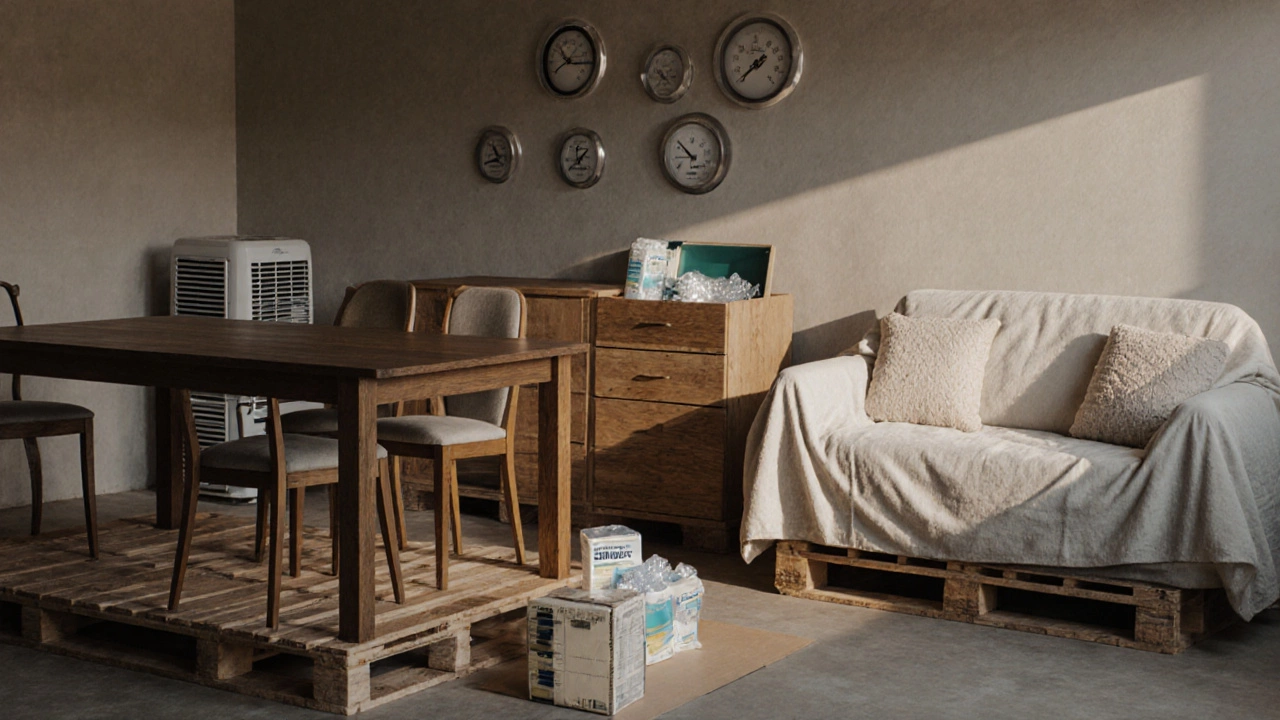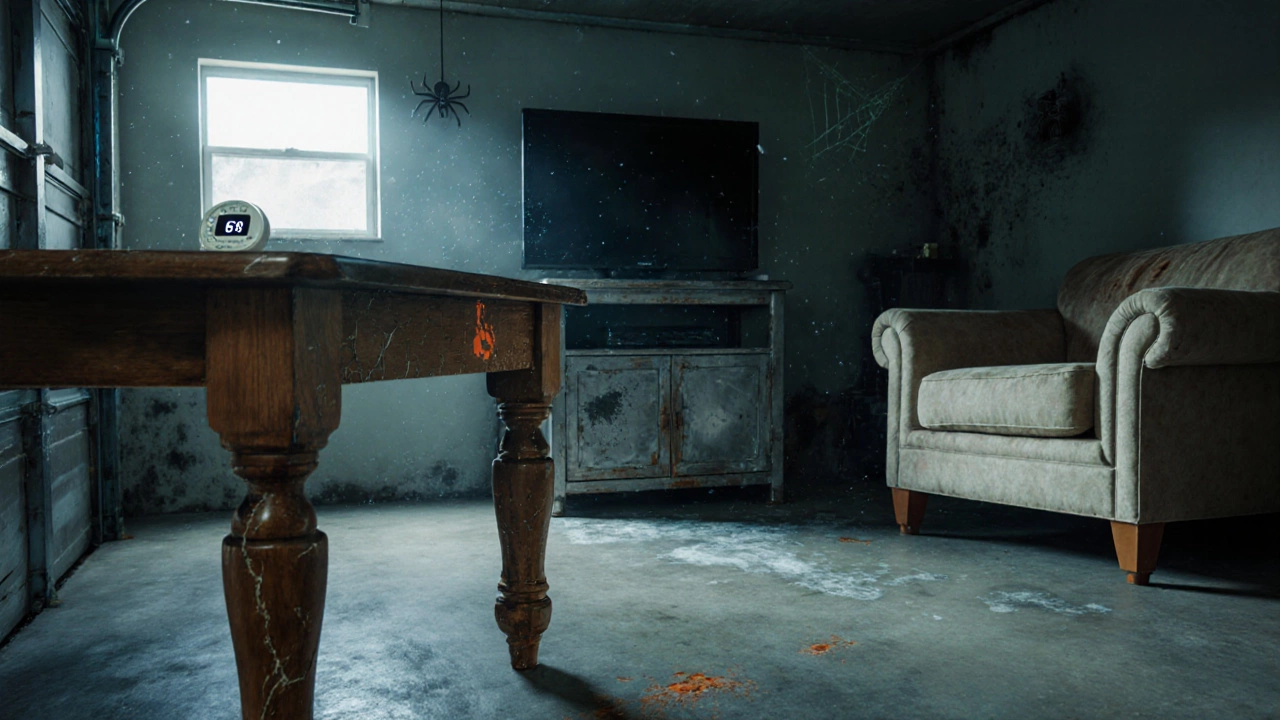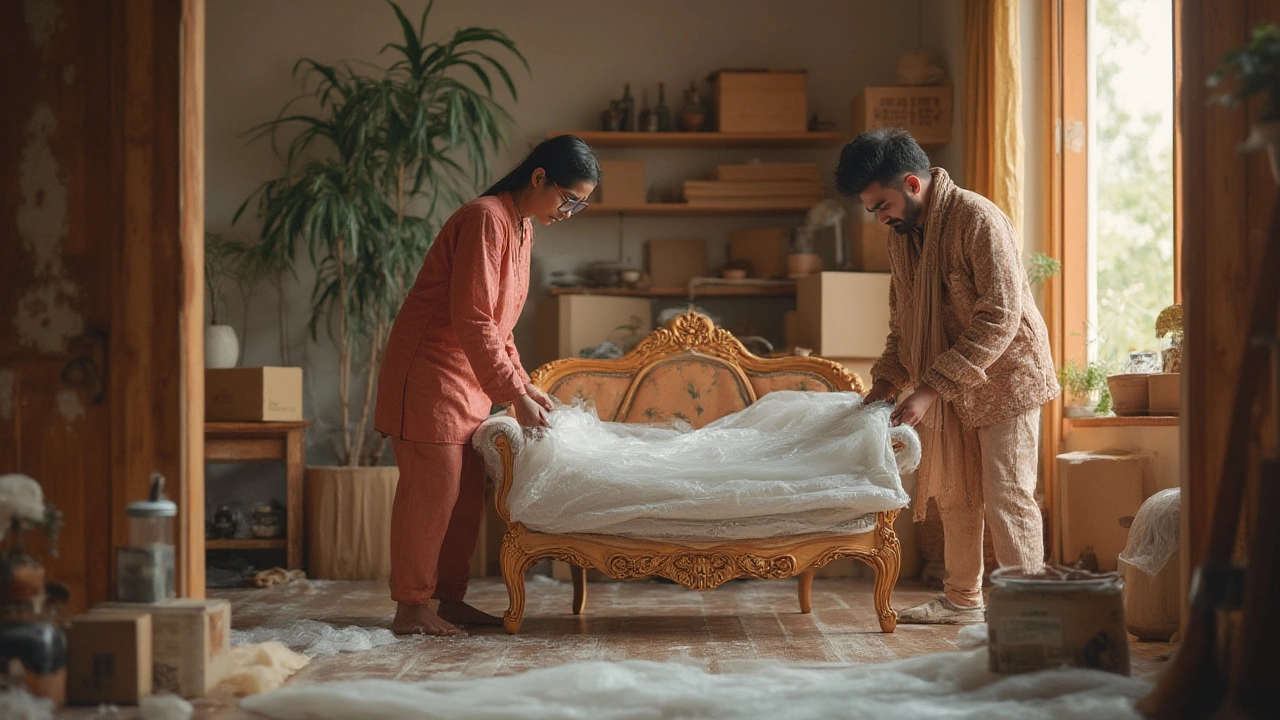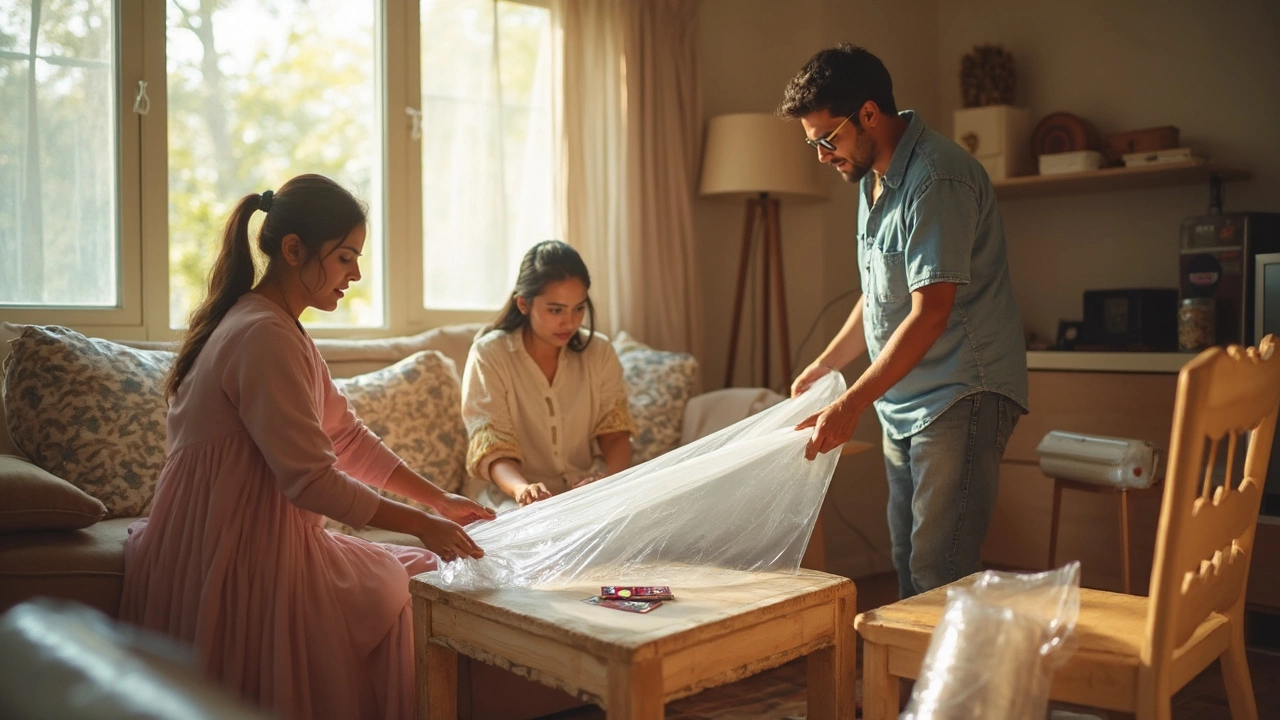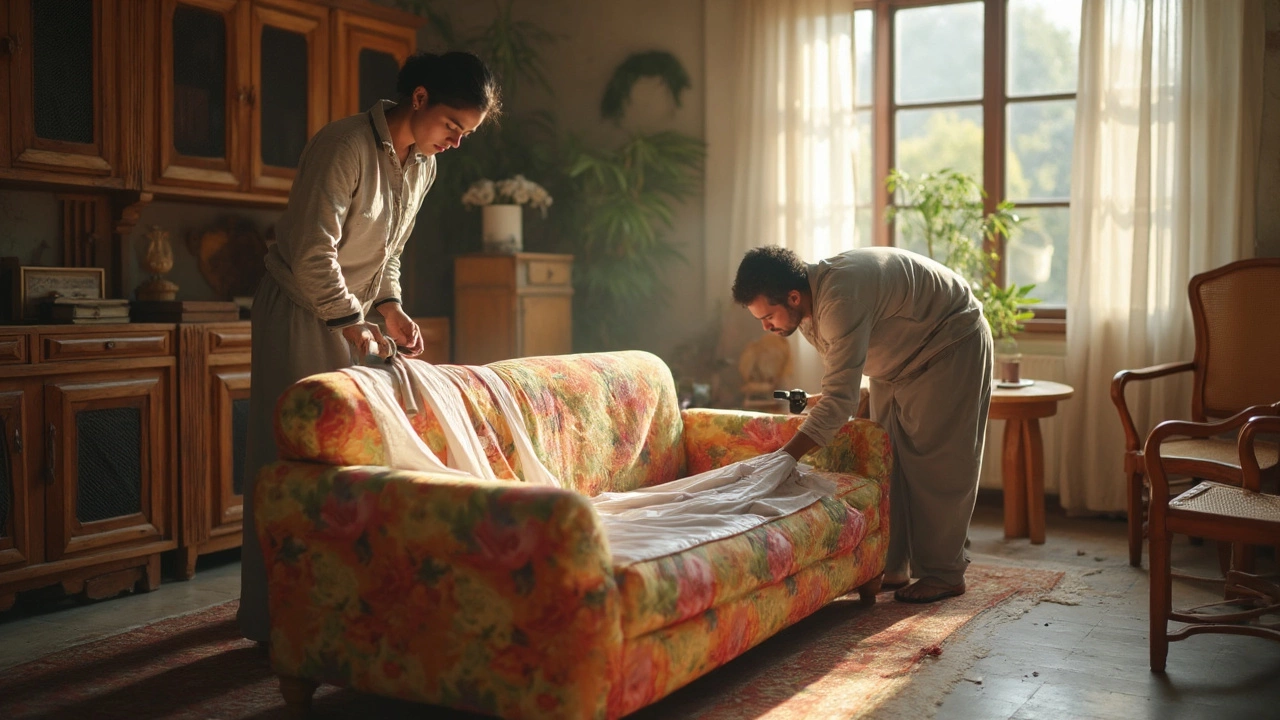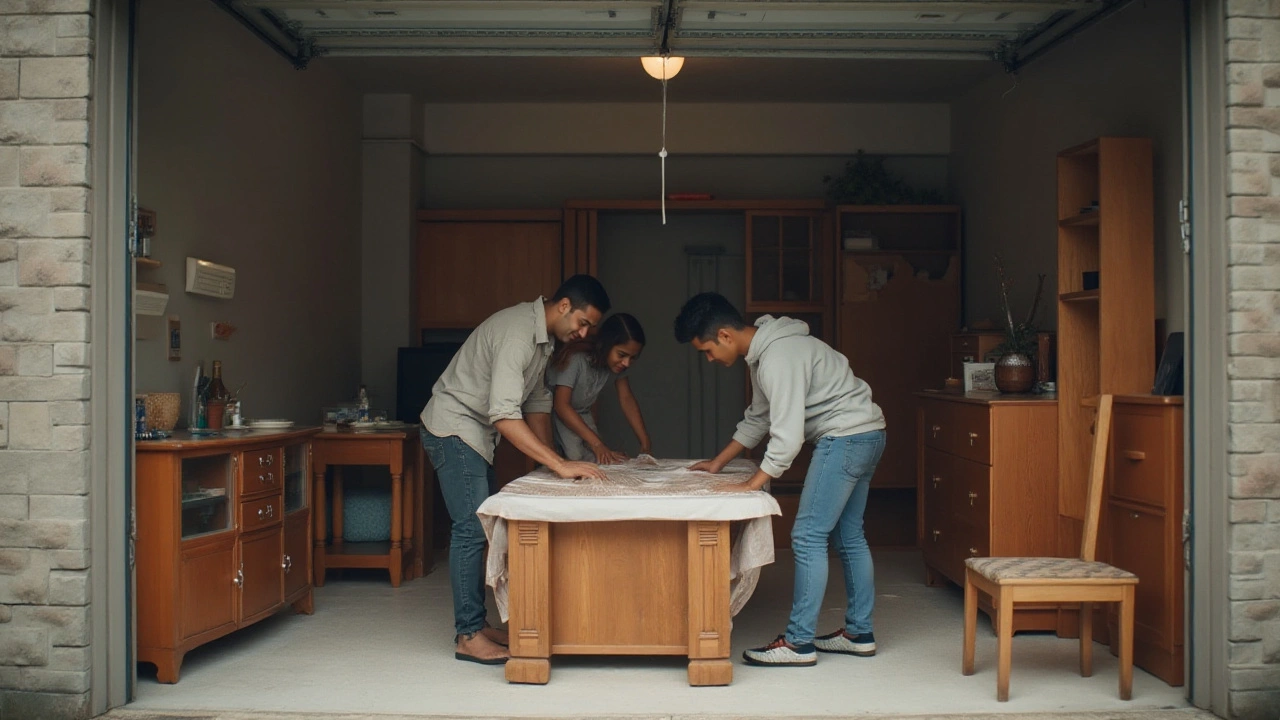Furniture Storage: Smart Ways to Keep Your Pieces Safe and Space‑Efficient
Got a couch you need to stash for a few months? Or maybe a set of chairs that just won’t fit in the garage? Storing furniture can feel like a puzzle, but it doesn’t have to be. Below are straight‑forward steps that will help you protect your items, save space, and avoid nasty surprises like mold or broken frames.
Measure, Plan, and Choose the Right Spot
The first thing you should do is get the exact dimensions of the piece you’re storing. Grab a tape measure and note the height, width, and depth. If you’re looking at a 10x10 storage unit, a typical three‑seat sofa (around 85‑90 inches wide) will need about 10‑12 feet of length when you lay it flat or on its side. Knowing these numbers lets you pick a unit that actually fits.
When you pick a location, think about climate. Basements can be damp, while attics get hot. A dry, temperature‑controlled unit is worth the extra cost because it stops mold from forming on cushions and wood. If you can’t get a climate‑controlled space, add a dehumidifier or silica packets to keep humidity low.
Protect Surfaces and Prevent Damage
Covering is a game‑changer. Slip a breathable furniture cover or a clean sheet over the couch to keep dust off while still letting air circulate. For wood coffee tables, use padded blankets or moving blankets on the bottom – they stop scratches and absorb bumps.
If you’re stacking items, place a sturdy sheet of plywood or a thick rug between layers. This spreads weight evenly and keeps the bottom piece from getting crushed. Avoid stacking heavy boxes directly on a soft sofa; the pressure can warp cushions and frame joints.
Don’t forget the little things: remove loose cushions, tighten any bolts, and tighten drawer slides on dressers. Tight parts are less likely to wobble when you move the unit later.
Smart Packing Hacks for Small Spaces
Use vacuum‑sealed bags for blankets, pillows and even sofa cushions. Squeezing out the air shrinks the volume dramatically, freeing up room for other items. Just make sure the cushions are completely dry before sealing – trapped moisture invites mold.
Modular furniture, like sectional sofas, can often be broken down into smaller sections. Disassemble legs, armrests, or back panels if the manufacturer allows it. Keep all screws in a labeled zip‑lock bag and tape it to the piece so you won’t lose anything.
If you’re storing a daybed couch, place the mattress on top of the frame and cover both with a mattress protector. This double barrier keeps spills from seeping into the wood and makes the whole unit easier to move.
Final Quick Checklist
- Measure every piece and the storage space.
- Choose a dry, temperature‑controlled unit when possible.
- Cover furniture with breathable cloths or blankets.
- Use plywood or rugs between stacked items.
- Vacuum‑seal soft items and discard any moisture.
- Label all hardware and keep it with the corresponding item.
Following these simple steps will keep your furniture looking good and ready to use when you bring it back home. No need for expensive repairs or endless cleaning – just a bit of planning and the right protection.
How to Store Furniture Properly Without Damaging It
Learn how to store furniture properly to avoid damage from humidity, pests, and improper handling. Get practical tips for cleaning, covering, and positioning pieces for long-term storage.
How Much Furniture Can You Store in a 10x10 Storage Unit?
Learn exactly how much furniture fits in a 10x10 storage unit, what to avoid, and how to pack it right. Real tips for moving, downsizing, or storing furniture in Melbourne.
Furniture Storage Tips for Non‑Climate‑Controlled Spaces
Learn how to protect sofas, tables, and wardrobes when storing them in garages or basements without climate control. Includes moisture control, wrapping tips, placement tricks, and a maintenance checklist.
Can Furniture Be Damaged in Storage? Expert Guide for Furniture Storage
Worried your furniture will get ruined in storage? Get the facts, real risks, and pro tips to keep sofas, tables, and more safe in any storage unit.
Does Furniture Go Bad in Storage? Everything You Need to Know
Worried your furniture might not survive a stint in storage? This article breaks down what really happens to sofas, chairs, and cabinets when they sit in storage. Learn what factors affect their condition, how to spot risk signs, and get real-world tips for keeping your stuff safe. You'll find out how long is too long, which problems to watch for, and easy ways to prevent costly mistakes. No jargon, just straightforward advice backed by real examples.
Can You Store Furniture in an Unheated Garage? Practical Answers You Need
Storing furniture in an unheated garage brings up all sorts of concerns, from moisture damage to warping. This article breaks down what happens to different types of furniture when stored in garages without climate control. You’ll learn how temperature swings, humidity, and pests can impact wood, metal, and upholstered pieces. The article offers simple tips to help you avoid common mistakes and keep your furniture safe, even in less-than-ideal conditions. Get the facts and tricks you need to make smart choices about garage storage.
Shrink Wrap Furniture for Storage: The Ultimate How-To Guide
Wondering how to protect your furniture when storing it? This article lays out everything you need to know about shrink wrapping your furniture for storage. Learn what supplies to buy, the step-by-step process, and insider tips for keeping your pieces safe from dust, moisture, and scratches. Avoid common mistakes, and get pro advice for different furniture types. Whether you’re moving across town or just freeing up space, this guide makes storage simple.
How to Prevent Mold on Furniture in Storage: Practical Tips That Work
Mold can ruin stored furniture quickly, turning it musty and unhealthy. This article breaks down clear steps anyone can follow to stop mold before it starts. You’ll learn what causes mold on furniture, which materials are most at risk, and exactly how to prepare furniture and your storage space. Get practical tips that work in real life to keep your stuff safe, dry, and mold-free.
Should You Wrap Your Couch in Plastic for Storage?
Thinking about putting your couch in storage? Learn if wrapping it in plastic is a smart move. We'll cover the reasons you might consider it, potential downsides, and practical alternatives. Protecting your furniture during storage can save you trouble later. Find out the pros and cons of plastic wrap and other options.
How Cold Can Furniture Get Before It Suffers?
Storing furniture in cold conditions can be risky, leading to potential damage if not managed properly. This article explores the effects of cold temperatures on different types of furniture and provides practical tips on maintaining their integrity. Learn about the ideal storage conditions, which materials are most vulnerable, and how to avoid costly repairs. Discover practical solutions to mitigate cold-related damages and keep your furniture pristine.
How to Cover Furniture for Storage
Storing your furniture properly can make the difference between keeping it in great condition and returning to it covered in dust or worse. To help you navigate this task, this article breaks down practical steps for covering your furniture effectively. Ensure your cherished pieces survive storage without a scratch by learning about suitable materials, handling wood and upholstery, and key moving tricks. Keep reading for savvy tips that are both simple and efficient.
Storing Furniture in a Cold Garage: Essential Tips and Tricks
Storing furniture in a cold garage can be quite challenging if not done properly. Fluctuations in temperature and moisture can significantly impact the integrity of furniture materials. Whether you're dealing with wood, metal, or fabric, understanding how these elements react to the cold is crucial. With the right precautions, you can protect your belongings and make the most of your garage space.
